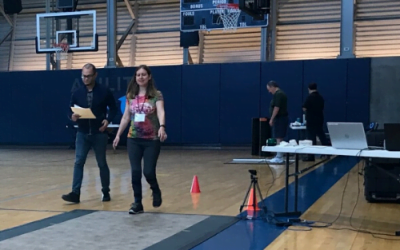A study of the correlation between gait abnormalities, activity monitoring parameters, CMTPedS and a biomarker in children with Charcot-Marie-Tooth disease.
STUDY INVESTIGATORS: SYLVIA OUNPUU MSC, GUYLA ACSADI, MD, PHD, AND KRISTAN PIERZ, MD.
BACKGROUND:
The overall goal of our research is to improve treatment outcomes that address gait dysfunction for children with Charcot-Marie-Tooth disease (CMT), since gait is one of the most important elements for quality of life for persons with CMT. To achieve this goal, a better understanding of the relationship between gait function, activity levels in the community and how these measures change over time is important. Identifying biomarkers for disease state and progression is also important for determining the efficacy of emerging new treatments for which the goal is to improve walking. Because of the generous funding by the Penn Medicine Orphan Disease Center we were able to add an additional 15 patient tests (some repeat and some new) to our existing study cohort which currently includes 68 patients.
RESULTS:
A preliminary analysis with a focus on the sagittal plane ankle motion during walking from a cohort of 45 patients with CMT1 and 2 showed differences in changes with age depending on CMT type. In children with CMT1, peak dorsiflexion in terminal stance (TST) increased with age through 13 years (p=0.004) and then plateaued in the normal range (p=0.73). The peak ankle angle in mid-swing and TST were closely related (p<0.001) following a similar change with age. In children with CMT2, there was no significant change in peak dorsiflexion in TST with age (p=0.19) and peak ankle angle in mid-swing was not related to peak dorsiflexion in TST (p=0.43) or age (p=0.88). There were also no consistent trends with age for individual patients with multiple tests.
SUMMARY:
Patients with CMT1 show beneficial changes in ankle function during both the stance and swing phases of gait with age, reaching a plateau around age 13 years. Patients with CMT2, however, do not show any systematic changes in ankle function during gait with age. Future studies with more repeat assessments for individual patients are needed to gain further understanding of gait changes with age in children with CMT. The heterogeneity of gait and joint level impairments point to the importance of a better understand the disease severity and progression for each individual. This knowledge will enable more informed treatment decisions and better understanding of treatment outcomes in the context of disease progression.
HNF was pleased to fund this promising research at the prestigious Connecticut Children’s Gait Lab. The project was overseen by Director of Research and Education, Sylvia Ounpuu, MSC, and Gyula Acsadi, MD, PhD, Division Head of Neurology. Both investigators are a part of the Inherited Neuropathy Consortium, as is HNF.














0 Comments